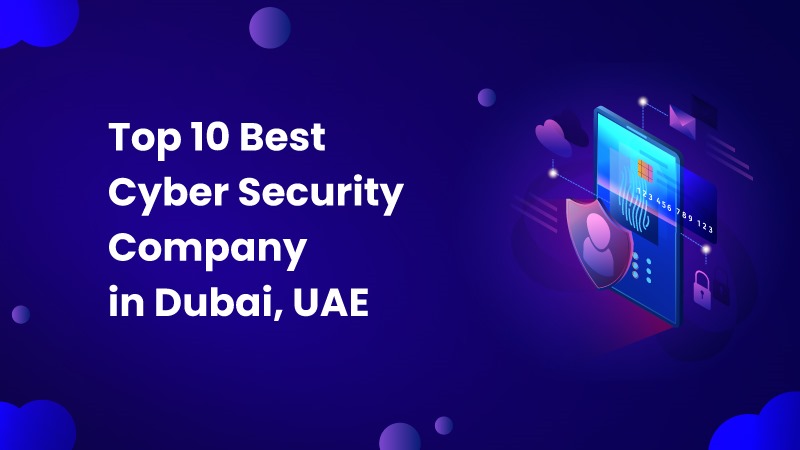1. Examine Professional Certifications Start by taking a look at the credentials held by employees. Look for certifications such as copyright Security Professionals copyright, Certified Information Security Managers CISM, Certified Ethical Hackers - CEH and copyright Auditor CISA. These certifications indicate a commitment to professionalism and an advanced level of expertise.
2. Review Team Experience
The experience of the entire team must be taken into consideration. Ask them about their previous experiences as well as the amount of time they have spent in the cybersecurity sector and their previous roles. A group of professionals with experience from different industries can provide fresh perspectives and solutions.
3. Check Educational Background
Check the education qualifications of the key employees. The degrees relevant to cybersecurity, computer technology and information technology show strong foundational knowledge. Credibility can be improved by combining higher-education credentials along with professional certificates.
4. Analyzing specialization areas
Team members should be able of defining their areas of expertise. Based on the needs of your company, knowledge in cloud security and network security, application or network security, data security and other areas can be beneficial. Particularized expertise is more likely to provide better solutions to cybersecurity challenges.
5. Ask about Ongoing Training and Development
Find out your company's commitment to professional development and training for employees. Continuous education is essential to ensure that your skills are up-to-date in the rapidly-evolving area of cybersecurity. This can be accomplished through workshops, seminars and other certifications.
6. Review Past Projects and Case Studies
Request information on past projects and case studies that illustrate the firm's capabilities. Learn more about their ability to solve problems and effectiveness by reading detailed descriptions of the cybersecurity issues they have solved for past clients.
7. Ask for testimonials from clients, references and reviews
Request reviews or testimonials from clients who have used the service previously. They will be able to confirm the quality of your service and its performance. Positive feedback is a sign of a solid reputation within the industry, and can be a proof of the company's ability to deliver top-notch services.
8. Examine the role of industry in promoting
Examine the company's involvement in the cybersecurity community. Participation at industry conferences and webinars or contributing to cybersecurity-related publications could show a commitment to keeping updated on the latest trends and best practices.
9. Examine Research and Development Efforts
If the business is investing in R&D this can improve the cybersecurity offerings of their clients. R&D companies that are considered priority are usually on the cutting edge of technologies and solutions. Clients looking for new approaches are able to gain from this.
10. Find awards and other recognition
Also, consider any awards or recognitions received from the company in the cybersecurity field. Industry awards can be used as a measure of quality and commitment to the delivery of services. They can also enhance the credibility and image of the company. See the most popular Cyber security services for blog recommendations including cyber security security, managed it services security, cybersecurity firms, cyber and security, cyber technologist, computer security company, data secure, cybersec consulting, managed cyber security services, cyber security and more.

Top 10 Tips To Evaluate The Technology And Tools Of The Cybersecurity Company In Dubai.
1. Assess Technology StackStart by examining the technology stack of the company. This comprises hardware, software and the tools they employ. A broad and well-constructed technology stack is a sign that a company can handle different cybersecurity challenges. Consider modern tools that follow best practices in the field.
2. Assess Security Solutions Offered
Look into the security solutions offered by the company such as firewalls, intrusion detection systems (IDS) and endpoint security. Also, look at the security information and events management (SIEM) as well as the security information and event management (SIEM), systems. Understanding the breadth of their options can help you determine if they are able to meet your company's security needs.
3. Examine Integration Capabilities
Consider how the technology and tools of your company work with the existing technology and systems. To ensure complete security and minimal disruption seamless integration is essential. Learn more about the approach of the company to integrate solutions into your current infrastructure.
4. Request Information About Automation and AI
Analyze the degree of automation as well as artificial Intelligence (AI) used by the firm to enhance their cybersecurity procedures. AI can aid in identifying threats, improving security, and boosting efficiency.
5. Be sure to check for regular software updates
Learn more about the ways in which the company manages software patches and updates. Regular updates protect against threats and new vulnerabilities. The proactive approach to ensuring that tools are maintained indicates an interest in security.
6. Assess the tools to assess vulnerability
Look into the company's vulnerability management tools and procedures. Achieving effective vulnerability management and scanning are essential for identifying potential weaknesses in the systems. Learn about their process for prioritizing and fixing weaknesses.
7. Review Incident Response Technologies
Find out about the technology the company employs in response to incidents. Effective tools for incident response can significantly lessen the damage caused by an incident of security. Find out about the company's response procedure and the technology.
8. Analytical Reporting Tools
Review the analytics and reporting capabilities of the company's tools. The comprehensive reporting capabilities can provide information about the security situation and trends in incidents and the status of compliance. Be sure that your organization has powerful analytics tools that aid in the use of data to make decisions.
9. Cloud Security Solutions
With the increasing popularity of cloud computing, assess the security features of your cloud provider. It is crucial for businesses that utilize cloud-based services understand what security measures they have in place to protect cloud-based environments.
Review of Feedback from Clients
At the end of the day, it is important to solicit feedback from your customers on the technology and tools that your company is using. The case studies or testimonials which highlight particular technologies' performance can give an important insight into their application and their effectiveness in realistic scenarios. See the top penetration testing company in uae for blog recommendations including cybersecurity consulting services, best cyber security company, cyber security requirement, defining cyber security, information security information, business and cybersecurity, cyber security website, cyber security risks, cyber security usa, cyber security education and more.

Top 10 Ways To Judge The Security Awareness Training Of A Cybersecurity Company
1. Evaluation of Training Content. Begin your evaluation by reviewing every detail in the security awareness programs. Make sure you cover the most important issues, including the concept of phishing (social engineering), password security, compliance, and protection of data. It is essential that employees are equipped with the skills and knowledge to respond to any potential threat.
2. Customization Options
Request if you can tailor the training program to suit the specific needs of your company and its culture. Tailoring your training to address specific challenges and situations that are faced by the employees of your organization can improve relevance and engagement.
3. Evaluation of training delivery methods
Explore the various delivery options to train your employees. You can choose from interactive simulations, webinars and online courses, and workshops. Combining different formats will accommodate different methods of learning, and boost the overall efficiency.
4. Interactive Elements
Make sure that the training contains interactive elements like tests, simulations, or real-world scenarios. Interactive training improves the learning process and engagement making it easier to apply knowledge in real-world scenarios.
5. Review the frequency and frequency of updates
Find out the frequency and updating of the content for training. Due to the constant evolution of cybersecurity threats regular training sessions as well as timely revisions to the curriculum are vital to keep employees up-to-date on the most recent threats and best practices.
6. Measurement Efficacy
Look for metrics such as assessment of the training's pre- and post-training phases as well as feedback from participants, and trends in reporting on incidents. Look at metrics such as feedback from participants, pre- and after-training assessments and the trending reports of incidents. The evaluation of the program's effectiveness can assist in determining its value and areas for improvements.
7. Make sure you have the right certification and are in conformity
If the course is accredited, it can enhance employee credibility. Certificates are an excellent way to improve the credibility of your employees and demonstrate that they've learned the necessary skills. Be sure to ensure that the training is in line with any pertinent regulations your company may have.
8. Find testimonials and references
Testimonials from past clients are a great way to gauge the effectiveness of your instruction. Testimonials can provide an information about the effectiveness of the training and how it was received by employees. Positive feedback is a sign of a solid reputation when it comes to providing awareness training that has an impact.
9. Review Support for Training Post-Training
Find out what support will be provided after the training has been completed. Continued resources such as refresher classes, newsletters, or access to knowledge bases can help to reinforce the learning.
10. Review Engagement and Culture Building
Then, assess the way in which your training program is helping to create the culture of security within your company. Find initiatives that encourage constant awareness, like security newsletters, workshops, or even competitions. A solid security culture will encourage employees to accept their part in protecting the organization. Read the recommended iconnect for site advice including cybersecurity firms, managed it services security, security solution, cyber security usa, data security management, network and systems security, cyber security software, cyber security technology, cyber & network security, it security logo and more.
